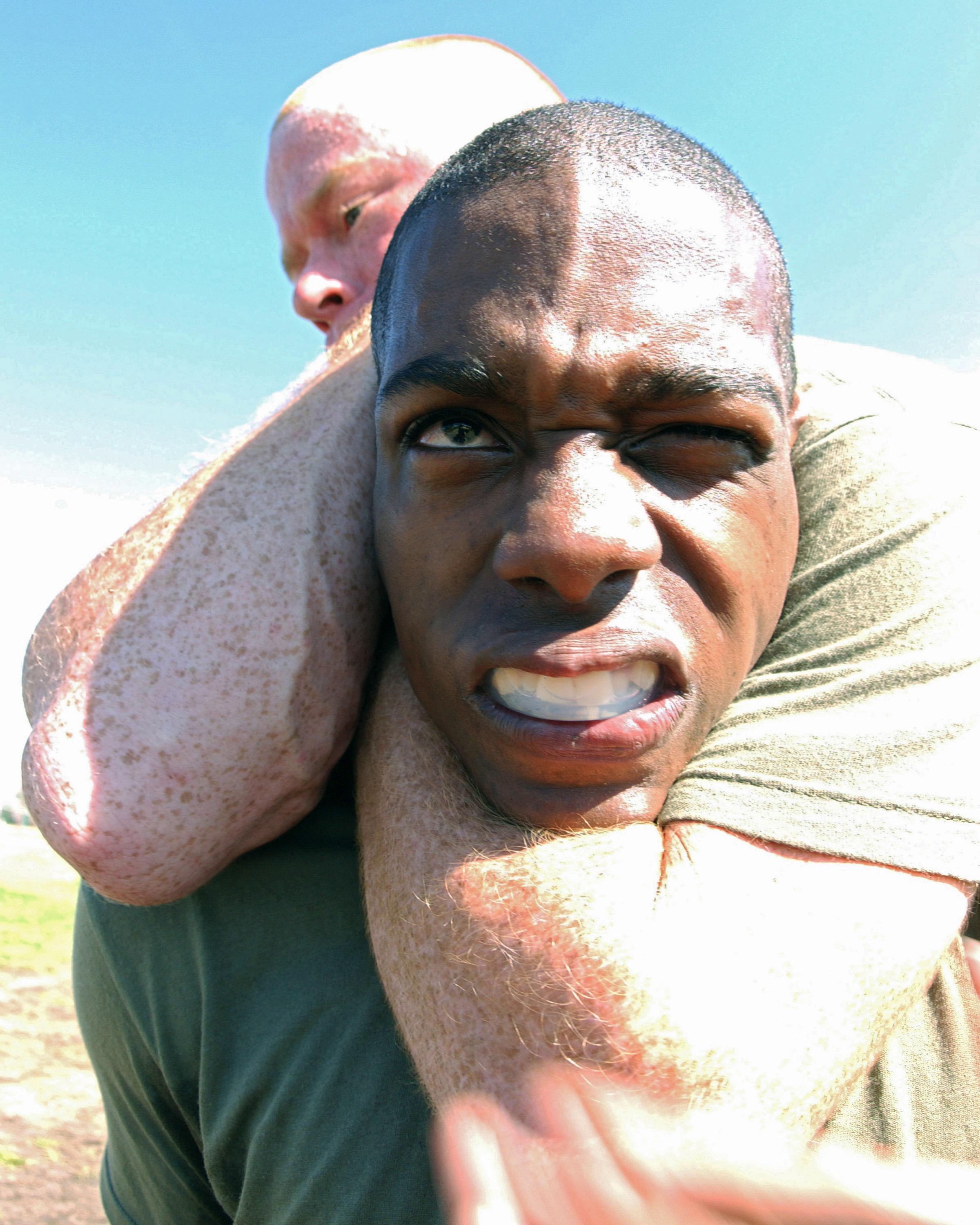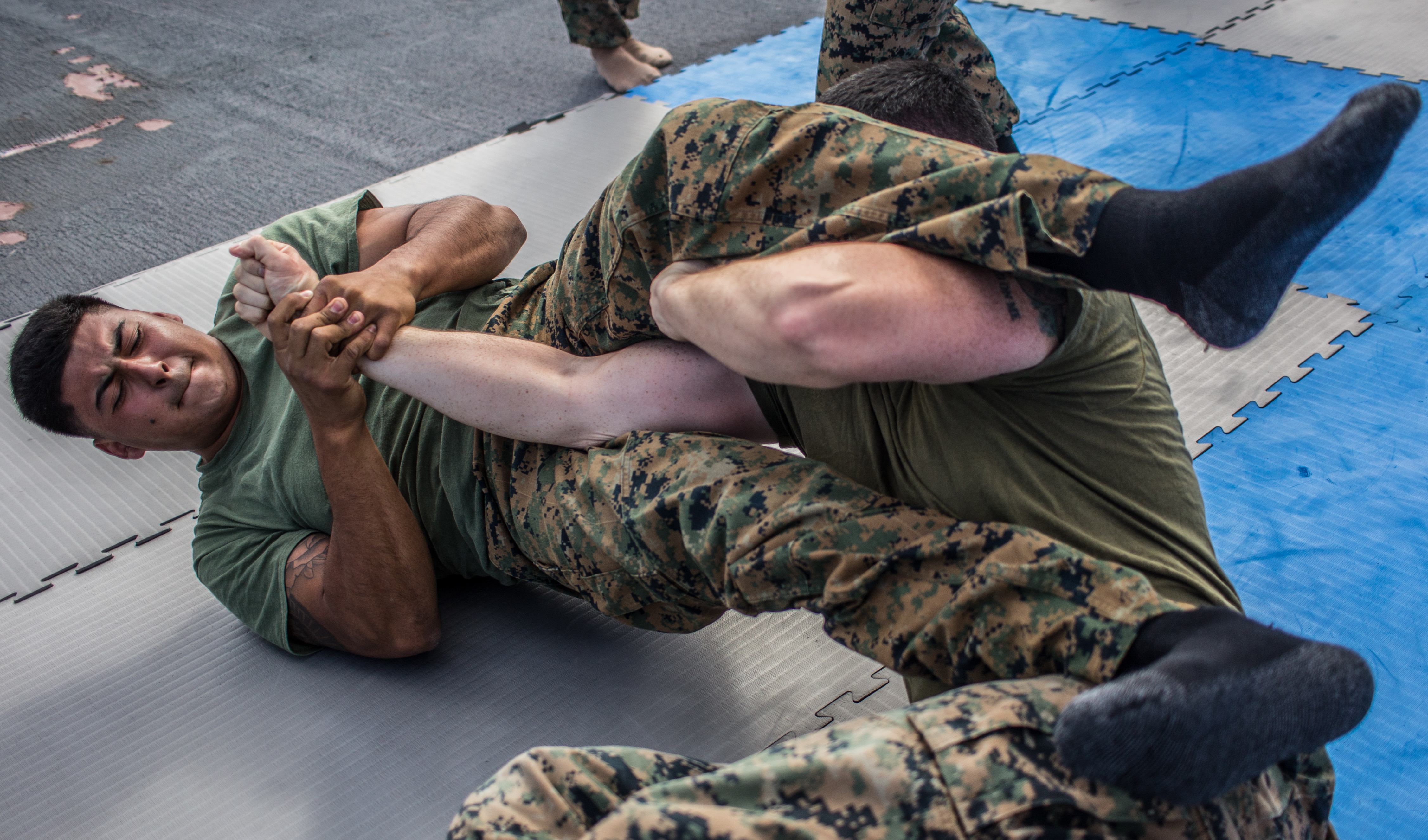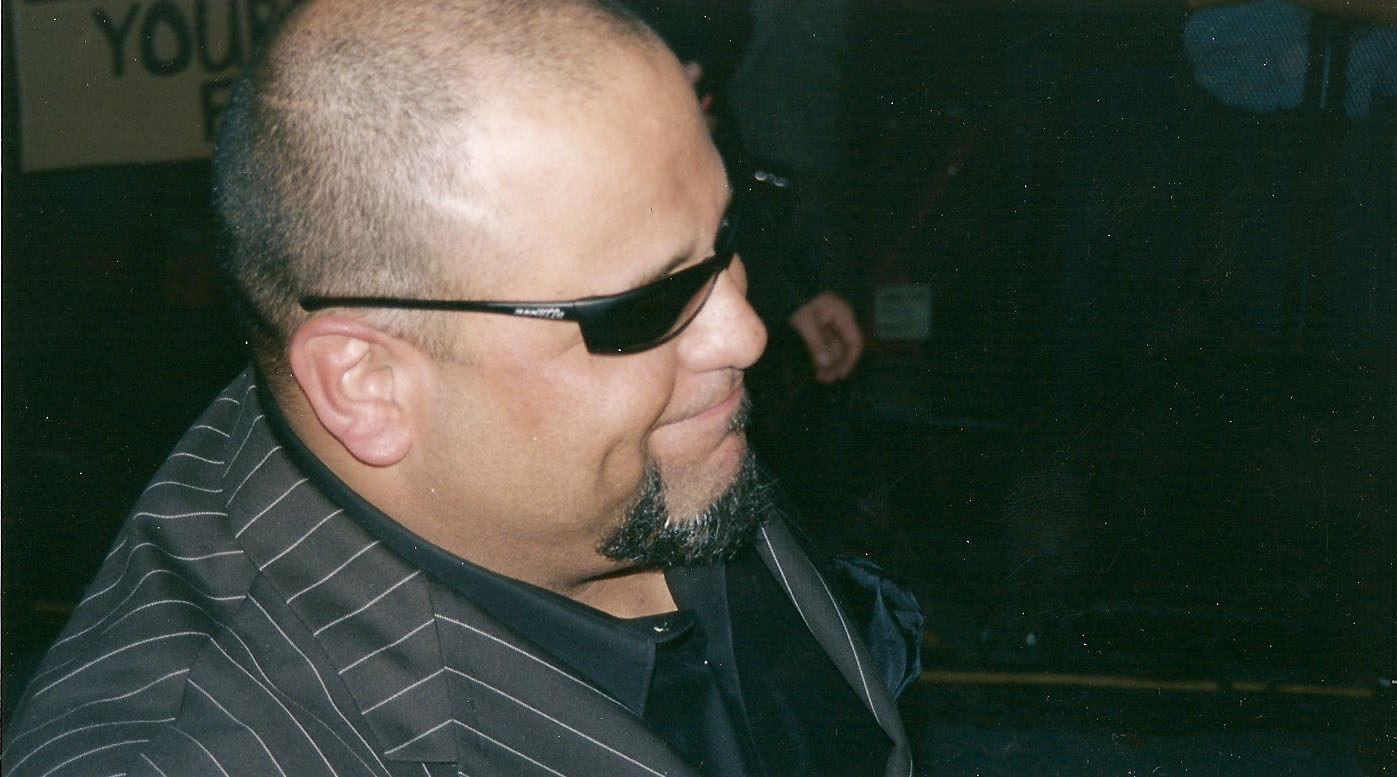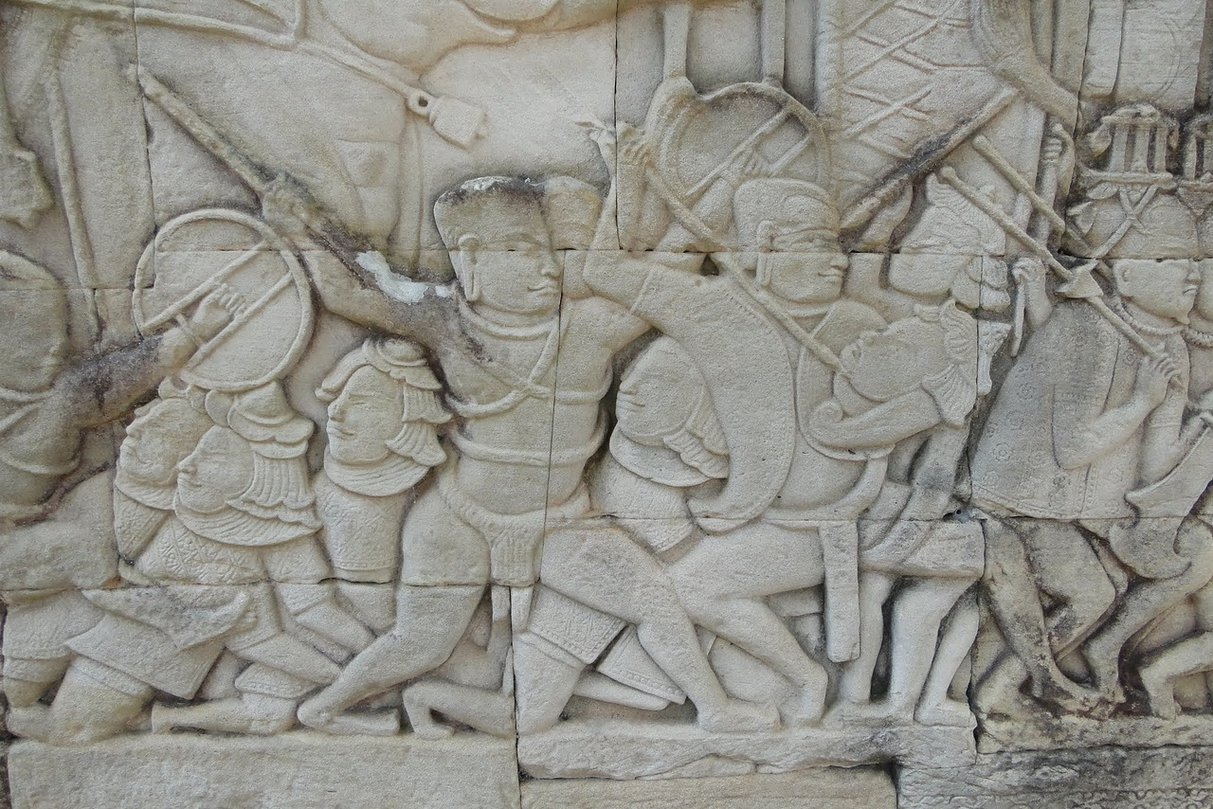|
Kata Ha Jime
, also spelled Katahajime, is a chokehold in judo.Mifune, Kyuzo: ''The Canon of Judo'', Kodansha International Ltd. (Tokyo) 2004, , p. It is one of the twelve constriction techniques of Kodokan Judo in the Judo Lists#Shimewaza, Shime-waza list. Description Kataha jime uses the lapel of the judo uniform to exert pressure on the carotid arteries (minimal pressure also being applied to the windpipe). The opponent's left arm is lifted and controlled as part of the technique. Examples of contests this finished * See also *The Canon Of Judo *Professional wrestling holds#Half nelson choke, Tazzmission, a professional wrestling variation, dubbed and utilized by retired professional wrestling, professional wrestler Tazz References External links *Reverse Kataha jimfrom http://www.judoinfo.comGraphicfrom http://www.judoinfo.com/techdrw.htm Demonstrated from http://home01.wxs.nl/~venro011/movie.htm Judo technique Grappling Grappling hold Grappling positions Martial art tec ... [...More Info...] [...Related Items...] OR: [Wikipedia] [Google] [Baidu] |
Rear Naked Choke
The rear naked choke (RNC) is a chokehold in martial arts applied from an opponent's back. The word "naked" in this context suggests that, unlike other strangulation techniques found in jujutsu/judo, this hold does not require the use of a keikogi ("gi") or training uniform. The choke has two variations: in one version, the attacker's arm encircles the opponent's neck and then grabs their own biceps on the other arm (see below for details); in the second version, the attacker clasps their hands together instead after encircling the opponent's neck. Recent studies have shown that the rear-naked choke takes an average of 8.9 seconds to render an opponent unconscious regardless of the grip that is used. "Figure four" or "short" variation This variant is considered to be a "''blood choke''" because it restricts blood flow to the brain via the carotid arteries. When applied correctly, it can cause temporary unconsciousness in a few seconds. The following is a description of this techn ... [...More Info...] [...Related Items...] OR: [Wikipedia] [Google] [Baidu] |
Professional Wrestling Holds
Professional wrestling holds include a number of set moves and pins used by performers to immobilize their opponents or lead to a Submission wrestling, submission. This article covers the various pins, stretches and transition holds used in the ring. Some wrestlers use these holds as their finishing maneuvers, often nicknaming them to reflect their character or persona. Moves are listed under general categories whenever possible. Stretches An element borrowed from professional wrestling's catch wrestling origins, stretches (or submission holds) are techniques in which a wrestler holds another in a position that puts stress on the opponent's body. Stretches are usually employed to weaken an opponent or to force them to ''submit'', either vocally or by ''tapping out'': slapping the mat, floor, or opponent with a free hand three times. Many of these holds, when applied vigorously, stretch the opponent's muscles or twist their joints uncomfortably, hence the name. Chokes, although not ... [...More Info...] [...Related Items...] OR: [Wikipedia] [Google] [Baidu] |
Grappling Positions
A grappling position refers to the positioning and holds of combatants engaged in grappling. Combatants are said to be in a neutral position if neither is in a more favourable position. If one party has a clear advantage such as in the ''mount'' they are said to be in a "dominant position". Conversely, the other party is considered to be in an inferior position, usually called "on the bottom", but in this case sometimes called the "under mount". Stand-up grappling position Called clinch position or standing grappling position, these are the core of clinch fighting. From a separated stand-up position, a clinch is the result of one or both fighters applying a ''clinch hold''. The process of attempting to advance into more dominant clinch positions is known as ''pummelling''. Major types of standing clinches include: * Bear hug * Collar-and-elbow position * Double collar tie * Double underhooks * Pinch grip tie * Clinch hold Fighters may attempt to break from the clinch, eithe ... [...More Info...] [...Related Items...] OR: [Wikipedia] [Google] [Baidu] |
Grappling Hold
A grappling hold, commonly referred to simply as a hold that in Japanese is referred to as ''katame-waza'' ( "grappling technique"), is any specific grappling, wrestling, judo, or other martial art grip that is applied to an opponent. Grappling holds are used principally to control the opponent and to advance in points or positioning. The holds may be categorized by their function, such as clinching, pinning, or submission, while others can be classified by their anatomical effect: chokehold, headlock, joint-lock, or compression lock. Multiple categories may be appropriate for some of these holds. Clinch hold A clinch hold (also known as a clinching hold) is a grappling hold that is used in clinch fighting with the purpose of controlling the opponent. In wrestling it is referred to as the tie-up. The use of a clinch hold results in the clinch. Clinch holds can be used to close in on the opponent, as a precursor to a takedown or throw, or to prevent the opponent from moving ... [...More Info...] [...Related Items...] OR: [Wikipedia] [Google] [Baidu] |
Grappling
Grappling, in hand-to-hand combat, describes sports that consist of gripping or seizing the opponent. Grappling is used at close range to gain a physical advantage over an opponent, either by imposing a position or causing injury. Grappling is a broad term that encompasses many disciplines. These various martial arts can be practiced both as combat sports and for self-defense. Grappling contests often involve takedowns and ground control, and may end when a contestant concedes defeat, also known as a submission or tap out. Grappling most commonly does not include striking or the use of weapons. However, some fighting styles or martial arts known especially for their grappling techniques teach tactics that include strikes and weapons either alongside grappling or combined with it. Grappling appeared in the 1950s. Types of technique Grappling techniques can be broadly subdivided into clinch fighting; takedowns and throws; submission holds and pinning or controll ... [...More Info...] [...Related Items...] OR: [Wikipedia] [Google] [Baidu] |
Judo Technique
This is a list of judo techniques. They are categorized into throwing techniques (''nage-waza''), grappling techniques (''katame-waza''), body-striking techniques (''atemi-waza)'', blocks and parries (''uke-waza''), receiving/breakfall techniques (''ukemi''), and resuscitation techniques (''kappo''). Nage-waza (投げ技): throwing techniques Te-waza (手技): hand throwing techniques # Ippon seoinage (一本背負投): Single-handed back throw # Kata guruma (肩車): Shoulder wheel # Kibisu gaeshi (踵返): One-hand reversal # Morote gari (双手刈): Two-hand reap # Obi otoshi (帯落): Belt drop # Seoi nage (背負投): Back throw # Seoi otoshi (背負落): Back drop # Sukui nage (掬投): Scoop throw # Sumi otoshi (隅落): Corner drop # Tai otoshi (体落): Body drop # Uchi mata sukashi (内股透): Inner thigh void throw # Uki otoshi (浮落): Floating drop # Yama arashi (山嵐): Mountain storm # Kouchi gaeshi (小内返): Small inner reap reversal # Kuc ... [...More Info...] [...Related Items...] OR: [Wikipedia] [Google] [Baidu] |
Tazz
Peter Senerchia (born October 11, 1967), better known by the ring name Taz (also spelled Tazz) is an American radio personality, color commentator, and retired professional wrestler signed to All Elite Wrestling (AEW) as a commentator and manager. He is known for his work in Extreme Championship Wrestling (ECW), where he was a two-time World Heavyweight Champion, a two-time World Television Champion, a three-time World Tag Team Champion, a two-time (and the inaugural) FTW Heavyweight Champion, and the fourth ECW Triple Crown Champion. His World Wrestling Federation/Entertainment (WWF/E) career as an in-ring performer came to an early end in 2002 and subsequently saw him transition into a color-commentary role, which he continued to do until his contract with WWE expired in April 2009. Two months later, Senerchia debuted in Total Nonstop Action Wrestling at their Victory Road pay-per-view under his previous Taz ring name and eventually reprised his role as a color comme ... [...More Info...] [...Related Items...] OR: [Wikipedia] [Google] [Baidu] |
Professional Wrestling
Professional wrestling is a form of theater that revolves around staged wrestling matches. The mock combat is performed in a ring similar to the kind used in boxing, and the dramatic aspects of pro wrestling may be performed both in the ring or—as in televised wrestling shows—in backstage areas of the venue, in similar form to reality television. Professional wrestling as a form of theater evolved out of the widespread practice of match fixing among wrestlers in the early 20th century. Rather than sanction the wrestlers for their deceit as was done with boxers, the public instead came to see professional wrestling as a performance art rather than a sport. Professional wrestlers responded to the public's attitude by dispensing with verisimilitude in favor of entertainment, adding melodrama and outlandish stuntwork to their performances. Although the mock combat they performed ceased to resemble any authentic wrestling form, the wrestlers nevertheless continued to pr ... [...More Info...] [...Related Items...] OR: [Wikipedia] [Google] [Baidu] |
The Canon Of Judo
The Canon of Judo is a book that was originally published in 1956, and written by Kodokan 10th dan, Kyuzo Mifune (1883-1965). The book covers almost all of the Kodokan recognized techniques, adds variations and new techniques, including Do-Jime in passing as well. The book also describes fifteen Kata developed by Mifune to teach adaptation through reversal and counters. The book organizes the techniques differently from the official Kodokan Gokyo. This book is based on new and revised material by the author made between the original publish date and the authors death. The original book, "Canon of Judo", does not contain this information. Furthermore, the original book was translated by K. Sugai whose translations were poor at best. (For example, "Or this is to throw him down by foot sweeping instant before his advanced-feet are fixed in order to change his position or break your balance.") Subjects covered The book gives a brief history of Jujutsu in Japan, and gives the lineag ... [...More Info...] [...Related Items...] OR: [Wikipedia] [Google] [Baidu] |
Katame-waza
A grappling hold, commonly referred to simply as a hold that in Japanese is referred to as ''katame-waza'' ( "grappling technique"), is any specific grappling, wrestling, judo, or other martial art grip that is applied to an opponent. Grappling holds are used principally to control the opponent and to advance in points or positioning. The holds may be categorized by their function, such as clinching, pinning, or submission, while others can be classified by their anatomical effect: chokehold, headlock, joint-lock, or compression lock. Multiple categories may be appropriate for some of these holds. Clinch hold A clinch hold (also known as a clinching hold) is a grappling hold that is used in clinch fighting with the purpose of controlling the opponent. In wrestling it is referred to as the tie-up. The use of a clinch hold results in the clinch. Clinch holds can be used to close in on the opponent, as a precursor to a takedown or throw, or to prevent the opponent from ... [...More Info...] [...Related Items...] OR: [Wikipedia] [Google] [Baidu] |
Judo Lists
Like many other martial arts, Kodokan judo provides lists of techniques students must learn to earn rank. For a more complete list of judo techniques by technique classification, including Japanese kanji, see the article judo techniques. Ukemi (breakfalls) Students first learn how to fall, and must master the fall exercises before moving on to the throws lists. * Mae ukemi, forward fall. * Ushiro ukemi, backward fall. * Yoko ukemi, side fall (accompanied by hard slap of tatami mat). * Mae Mawari Ukemi, forward judo roll. Nage-waza (throwing techniques) The 68 throws of Kodokan judo Dai ikkyo (1st group) # Deashi harai (or barai) # Hiza guruma # Sasae tsurikomi ashi # Uki goshi # Osoto gari (Major Outside Reap) # O goshi # Ouchi gari # Seoi nage Dai nikyo (2nd group) # Kosoto gari # Kouchi gari # Koshi guruma # Tsurikomi goshi # Okuriashi harai # Tai otoshi # Harai goshi # Uchi mata Dai sankyo (3rd group) # Kosoto gake # Tsuri goshi # Yoko otoshi # Ashi guruma # Han ... [...More Info...] [...Related Items...] OR: [Wikipedia] [Google] [Baidu] |
Judo
is an unarmed gendai budō, modern Japanese martial art, Olympic sport (since 1964), and the most prominent form of jacket wrestling competed internationally.『日本大百科全書』電子版【柔道】(CD-ROM version of Encyclopedia Nipponica, "Judo"). Judo was created in 1882 by Kanō Jigorō () as an eclectic martial art, distinguishing itself from its predecessors (primarily Tenjin Shin'yō-ryū, Tenjin Shinyo-ryu jujutsu and Kitō-ryū jujutsu) due to an emphasis on "randori" (, lit. 'free sparring') instead of "kata" (pre-arranged forms) alongside its removal of striking and weapon training elements. Judo rose to prominence for its dominance over Kodokan–Totsuka rivalry, established jujutsu schools in tournaments hosted by the Tokyo Metropolitan Police Department (警視庁武術大会, ''Keishicho Bujutsu Taikai''), resulting in its adoption as the department's primary martial art. A judo practitioner is called a , and the judo uniform is called . The objective of co ... [...More Info...] [...Related Items...] OR: [Wikipedia] [Google] [Baidu] |







